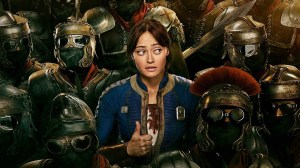Star Trek fans know that Kirk and the Enterprise crew’s original five-year mission was cut short. Star Trek: The Original Series only lasted three seasons, and while there have been previous attempts to tell what happened during those missing years, none have left a mark. Then IDW Publishing announced that it would launch an ongoing series chronicling the final year of the Enterprise’s voyage (paying deference to Star Trek: The Animated Series as “year four” of the journey). At the time, it seemed little different from its predecessors, a continuity stopgap with an eye-catching hook that would at best be an inoffensive diversion by its very nature.
Videos by ComicBook.com
But Star Trek: Year Five turned out to be a lot more, which was apparent from the first issue. The writing team of Jackson Lanzing and Collin Kelly kicked off the series with a bold story foretelling Kirk’s death, killed execution-style on the bridge of his beloved ship as it seemed to come apart. Lanzing and Kelly painted Kirk’s journey back to Earth as a space-bound Odysseus returning to Ithaca. Artist Stephen Thompson rose to the occasion, matching the tone by depicting the Enterprise in all of its epic glory and the characters with an appropriate sense of drama.
From there, Lanzing and Kelly served as “showrunners” on the Star Trek: Year Five‘s writing room, allowing various collaborators to script “episodes” of this final season, joined by a rotating team of talented artists. Together, they went beyond simply doing justice to Star Trek: The Original Series but improved upon its formula.
In the 1960s, television yearned for a simple story with a strong leading actor. Thus, the troika of Kirk, Spock, and Dr. McCoy pulled the thematic weight of almost every episode, relegating the rest of the cast to support roles. While Star Trek: Year Five offered plenty of excellent material for those three, it made the time to develop the rest of the crew. Lt. Uhura, who didn’t even get so much as a first name in The Original Series, perhaps benefits most. The communications offer in this series does more than patching in messages to and from Kirk. She’s central to breaching the language barrier between the Enterprise crew and Bright Eyes, the Tholian child they rescue from a destroyed colony at the series’ start, and later shows some skill in hacking.
The series’ overarching theme has been about change. The writing has focused on showing how the characters from The Original Series became the changed character who returned for the Star Trek movies. How did Captain Kirk go from wide-eyed, eager adventurer to Admiral Kirk, a frustrated desk jockey who can barely conceal how envious he is of the Enterprise’s new captain. How did Spock go from someone who appreciated his friends and their humanity and spurned his father’s wishes by joining Starfleet become a former Starfleet officer on the verge of ritually expelling the last vestiges of his humanity?
Meanwhile, the Enterprise crew must fight against a shadowy menace that is a manifestation of inertia, the forces of nostalgia, that would stop the universe from changing altogether to preserve what once was. That’s about a philosophically opposed to Star Trek’s mantra as an antagonist can get.
Star Trek: Year Five #24 resolved the immediate conflict, allowing Star Trek: Year Five #25 to serve as an epilogue that points the way towards Star Trek: The Motion Picture. Lanzing and Kelly write, joined by some of the writers and artists who have made this series such a success: Jody Houser, Brandon Easton, Jim McCann, Paul Cornell, Silvia Califano, Angel Hernandez, Christopher Jones, Carlos Nieto, J.J. Lendl, Megan Levens.
In a near-anthology format, each section of the issue focuses on a different character. Some of the scenarios are what fans would expect. Kirk meets with Bright Eyes one last time to broker peace between the Federation and the Tholians. Spock resigns and returns to Vulcan, though he finds It hard to forget his friends in Starfleet.
Others, not as much. Chekov and Sulu find themselves in a hostage situation that shows Year Five still had one or two subversions left in it. Meanwhile, Uhura visits Scotty, and the Enterprise’s chief engineer realizes that the old ship may not be the love of his life after all. Each is well crafted and provides a satisfying pause in these characters’ journeys that Star Trek fans know are far from over.
Star Trek: Year Five is a remarkable achievement for a licensed comic. Often, these titles have little new or exciting to offer fans of their source material and even less for those who aren’t familiar, ultimately feeling redundant or vestigial. Star Trek: Year Five is neither. It set out on a mission to tell an essential missing chapter in the lives of these characters, and it succeeded. While no Star Trek comic or novel is considered canon, anyone who reads Star Trek: Year Five will likely find it lives up to the television shows and films that bookend it and that its 25 issues fit well into their next Star Trek marathon. Star Trek: Year Five #25 is a fond farewell to a series that went harder than it had to and, by doing so, carved a place for itself into Star Trek’s mythology.
Published by IDW Publishing
On October 6, 2022
Written by Jackson Lanzing & Collin Kelly, Jody Houser, Brandon Easton, Jim McCann, and Paul Cornell
Art by Silvia Califano, Angel Hernandez, Christopher Jones, Carlos Nieto, J.J. Lendl, Megan Levens
Colors by Charlie Kirchoff
Letters by Neil Uyetake
Cover by Stephen Thompson and Charlie Kirchoff








